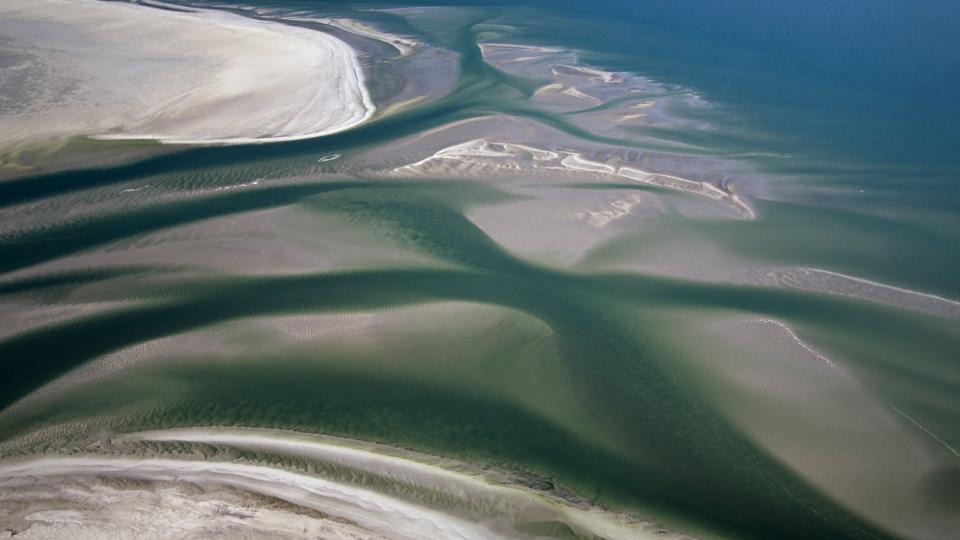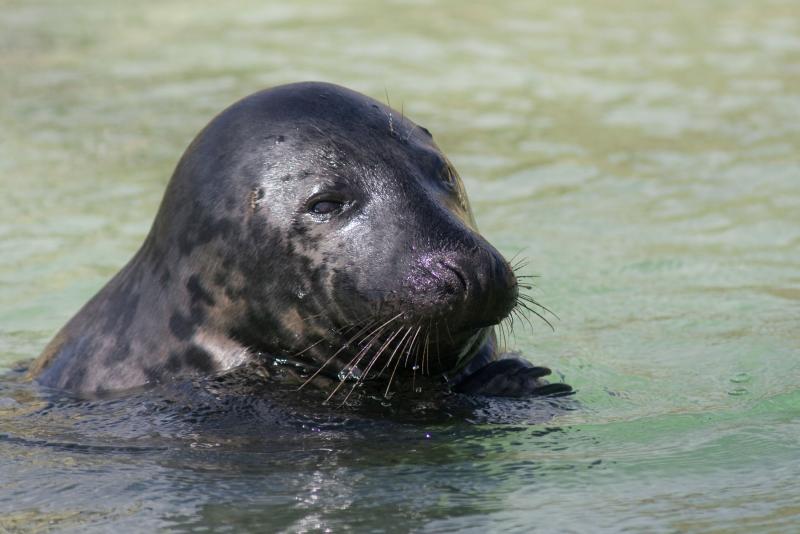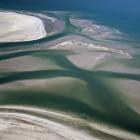
View of the Wadden Sea—a landscape in flux
View of the Wadden Sea—a landscape in flux
© Martin Stock, Landesbetrieb Küstenschutz, Nationalpark, Meeresschutz Schleswig-Holstein.
The copyright holder reserves, or holds for their own use, all the rights provided by copyright law, such as distribution, performance, and creation of derivative works.
The intertidal zone of the Wadden Sea stretches along the southeastern coast of the North Sea from the Netherlands to Denmark. It has a total length of some 500 kilometers and a total area of about 10,000 kilometers squared. Its landscape is shaped by flux and is characterized by a multitude of transitional zones between land and sea, which are rich in species specially adapted to the environmental conditions. Today several national parks along the Dutch and German Coast are part of the United Nations transboundary Wadden Sea World Heritage site. But it took a long time to turn the muddy flats and wetlands into something that deserved broader attention, required protection, and would eventually become a place of “universal outstanding value.”

“Our Mellum, a bird’s santuary”: Leaflet of a German bird protection society, undated.
“Our Mellum, a bird’s santuary”: Leaflet of a German bird protection society, undated.
All rights reserved © Archiv Stiftung Naturschutzgeschichte.
The copyright holder reserves, or holds for their own use, all the rights provided by copyright law, such as distribution, performance, and creation of derivative works.
At the beginning of the twentieth century small nature reserves were founded on the islands to protect birdlife. But apart from such spots, the Wadden Sea was seen as a hostile and threatening rather than threatened landscape. Over centuries it was modified by human action via a growing systems of dikes and embankments. After 1950 the flood control systems and infrastructure—like the construction of ports, the improvement of large scale tourism, and the damming of tidal inlets—grew fast. The periphery of the area was also to be developed.
The avant-garde of the movement, speaking out against such unrestricted development, was the international ornithological network. The results of their research proved that the Wadden Sea served as a stop-over for millions of migrating birds and thus had an international ecological dimension. Only now the “wilderness,” the area’s biological uniqueness, and transboundary significance were realized. The international dimension—not only of the habitat but also of the threats of pollution, maritime traffic, and military use—forced many local and private organizations to cooperate.
Slowly capacity and regime building processes began. In 1965 the interdisciplinary International Wadden Sea Working Group was formed to coordinate the research and collect data; in 1978 the three nations involved pursued a common conservation policy; in 1982 a Joint Declaration was signed; and in 1987 a common secretariat established in Wilhelmshaven (Germany).

Ignorant of borders: The grey seal, extinct for centuries, returned to the Wadden Sea in 2007.
Ignorant of borders: The grey seal, extinct for centuries, returned to the Wadden Sea in 2007.
All rights reserved © Martin Stock, Landesbetrieb Küstenschutz, Nationalpark, Meeresschutz Schleswig-Holstein.
The copyright holder reserves, or holds for their own use, all the rights provided by copyright law, such as distribution, performance, and creation of derivative works.
Fostered by a fast growing national park euphoria in Europe, the 1980s saw various reserves being established along the Wadden Sea. While their national and even federal status differs, the whole area was designated as a UNESCO World Heritage Site for its outstanding geomorphological and ecological value in 2009. Yet, this status is not unchallenged.
How to cite
Wöbse, Anna-Katharina and Ziemek, Hans-Peter. “A Muddy Transnational Park: The Wadden Sea.” Environment & Society Portal, Arcadia (2014), no. 10. Rachel Carson Center for Environment and Society. https://doi.org/10.5282/rcc/6236.
ISSN 2199-3408
Environment & Society Portal, Arcadia
 This work is licensed under a Creative Commons Attribution-NonCommercial-ShareAlike 3.0 Unported License.
This work is licensed under a Creative Commons Attribution-NonCommercial-ShareAlike 3.0 Unported License.
2014 Anna-Katharin Wönse, Hans-Peter Ziemek
This refers only to the text and does not include any image rights.
Please click on the images to view their individual rights status.
- Common Wadden Sea Secretariat (CWSS). Nomination of the Dutch-German Wadden Sea as World Heritage Site. Wilhelmshaven: Common Wadden Sea Secretariat (CWSS), 2008. (Link)
- Gätje, Christiane and Karsten Reise. Ökosystem Wattenmeer/The Wadden Sea Ecosystem. Heidelberg: Springer, 1998.
- Pott, Richard. Die Nordsee. Eine Natur- und Kulturgeschichte. München: C.H. Beck, 2003.
- Reise, Karsten. A Natural History of the Wadden Sea: Riddled by Contingencies. Leeuwaarden/Wilhelmshaven: Waddenacademie, 2013.
- Wöbse, Anna-Katharina. “Knechtsand—A Site of Memory in Flux.” In Global Environment 2 (2013): 160–83.









